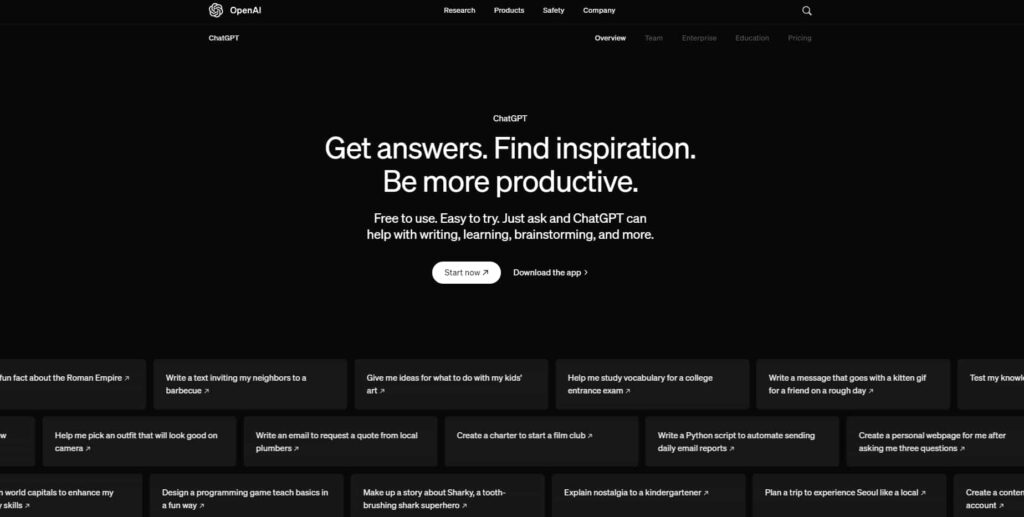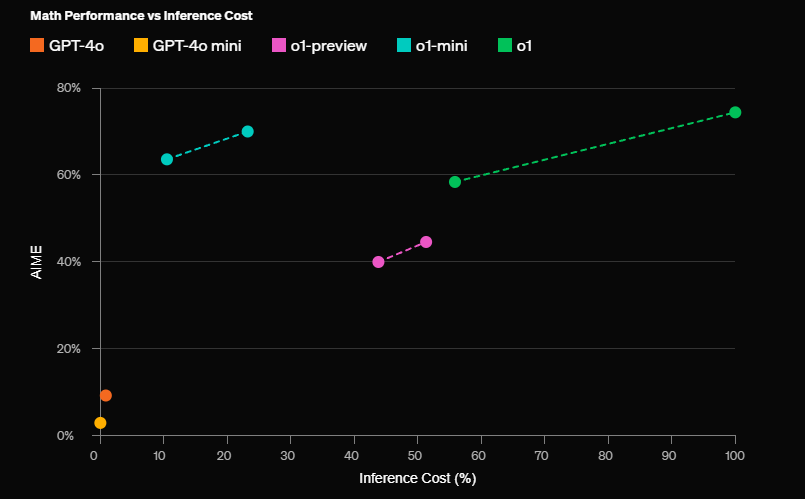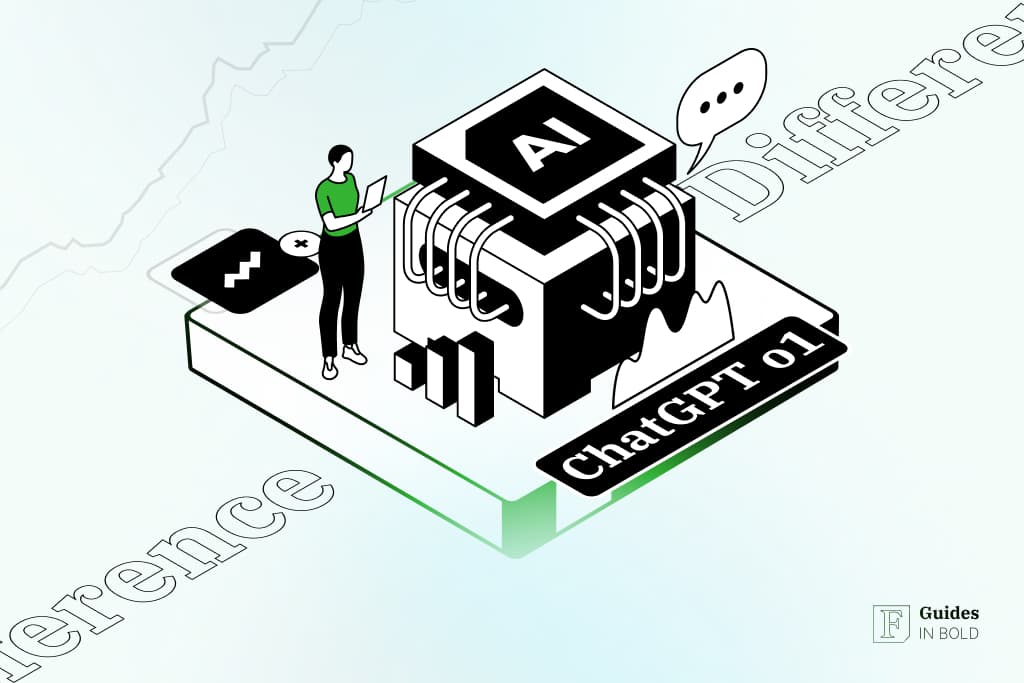OpenAI continues to shape the future of artificial intelligence (AI), this time with the release of its o1 series, which features models capable of executing more complex linguistic and scientific tasks. Far from a simple upgrade, this new development is poised to reshape the limits of machine intelligence in the realm of science and coding. In this brief guide, we’re going over some of the differences between regular ChatGPT and ChatGPT o1 models.
What is ChatGPT?

ChatGPT, an AI-driven language model by OpenAI, is engineered to understand and produce human-like text responses based on given inputs. Trained on vast amounts of text data, it learns natural language patterns and structures, as well as contextual nuances. Using deep learning and transformer neural networks, ChatGPT is able to provide accurate and relevant answers to diverse user queries.
ChatGPT vs. ChatGPT o1
Here are the main differences between ChatGPT vs. ChatGPT o1:
| Feature | ChatGPT o1 | Regular ChatGPT (GPT-4o) |
| Model variants | o1-preview, o1-mini | GPT-4o |
| Target use case | Complex reasoning, coding, advanced math, science | General-purpose, image, and video generation |
| Performance | Superior at complex problems like coding, physics, and multi-step workflows | Good at general tasks, faster for everyday use |
| Advanced tools | Lacks browsing, file uploads, memory, vision, and voice capabilities | Has access to web browsing, memory, file uploads, voice, and vision |
| Safety | Better safety protocols with higher adherence to guidelines (scored 84 on jailbreaking tests) | Moderate safety (scored 22 on jailbreaking tests) |
| Message limits | 30 messages per week (o1-preview), 50 (o1-mini) | Higher message limits depending on the plan |
| Knowledge cutoff | October 2023 | October 2023 |
| Best for | Coding, math, scientific research, strategy ideation | General text, image, and voice tasks |
ChatGPT o1: Is it better?
OpenAI’s new GPT-o1 model introduces advanced reasoning capabilities not available in GPT-4o, particularly for solving complex, multi-step problems in fields such as coding, advanced mathematics, and scientific research. GPT-o1 models are trained using a “chain-of-thought” process, allowing them to think through problems step-by-step before responding. This capability enables GPT-o1 to provide more accurate and nuanced answers for tasks requiring deep reasoning, while GPT-4o focuses on versatility and speed for more general-purpose tasks.
Below are some key areas where GPT-o1 excels beyond regular GPT-4o:
- Reasoning ability: GPT-o1 significantly outperforms GPT-4o in complex reasoning tasks, such as advanced mathematics, physics, and logic. It uses a “chain-of-thought” process to break down complex problems step by step, leading to more accurate and nuanced answers. This makes it ideal for fields like coding, scientific research, and advanced analytics, where deep, structured thinking is required. GPT-4o, while still competent, does not match this level of detailed reasoning and often performs better with simpler tasks;
- Performance in complex tasks: GPT-o1 is especially useful for high-level problem-solving in fields like competitive programming (ranking in the 89th percentile in Codeforces) and math Olympiad challenges. It excels in areas where precise reasoning is key, achieving PhD-level accuracy in biology, chemistry, and physics benchmarks. In contrast, GPT-4o is more versatile for general language tasks and creative applications, making it the better choice for broader use cases that don’t require deep reasoning;
- Processing speed: GPT-o1 takes longer to process responses due to its deeper reasoning capabilities. It’s about 30 times slower than GPT-4o in certain tasks. This makes GPT-4o a better option for real-time or high-frequency interactions, where speed and generality are more important than detailed analysis;
- Use cases: GPT-o1 shines in tasks requiring logical, step-by-step problem-solving, like coding, multi-step workflows, and research tasks. GPT-4o is better suited for multimodal tasks, including text, image, and voice generation, and offers a wider application range in areas like customer service, content creation, and general-purpose automation;
- Planned enhancements: While GPT-4o already supports browsing, file uploads, and voice capabilities, GPT-o1 currently lacks these but is expected to receive these features in future updates, making it more versatile in the long term for tasks requiring real-time data access.
Recommended video: Is OpenAI o1 Actually Better Than ChatGPT-4o? OpenAI’s Newest Flagship Model and Its Capabilities
What is ChatGPT o1?
The new o1 models have been trained to take more time to solve problems. This brings the processes underlying the artificial intelligence model closer to mimicking how an actual person approaches the task at hand, that is, experimenting with different approaches and identifying mistakes. In other words, the o1 models leverage the chain-of-thought AI process during inference to break down problems into smaller steps and tackle each one sequentially before delivering the final output that users see.
According to OpenAI’s o1 preview, the updated model demonstrated PhD-level performance on tough benchmark tasks across physics, chemistry, and biology. Moreover, it showed impressive results in math and coding. In an International Mathematics Olympiad (IMO) qualifying exam, GPT-4o solved only 13% of the problems correctly, while the reasoning model achieved an 83% success rate.

However, as o1 is still in its early phase, it lacks some of the characteristic features that come with the base ChatGPT model, such as file uploads and web browsing. Consequently, GPT-4o is likely to remain the go-to option for the average user, at least for a while.
The advanced reasoning capabilities of the o1 model will, however, find immediate uses in science, coding, math, and related areas. For instance, the o1 model can help annotate cell sequencing data, generate intricate mathematical formulas for quantum optics, and execute multi-step workflows.
Increased safety for GPT o1
ChatGPT o1-mini vs. ChatGPT o1-preview
The o1 model series comes in two variants: ChatGPT o1-mini and ChatGPT o1-preview. The OpenAI o1-mini is a faster and more affordable reasoning model optimized for coding tasks. As a consequence, it is 80% less expensive than the o1-preview model, offering a powerful and cost-effective solution for apps that prioritize reasoning over extensive world knowledge.

Conclusion
ChatGPT o1 models showcase major advancements in AI, each tailored to specific user requirements. ChatGPT o1-preview excels in speed and intelligence, while ChatGPT 4o brings image generation capabilities to the table. With AI evolving rapidly, these tools are positioned not only to boost productivity but spark innovation too.
Disclaimer: The content on this site should not be considered investment advice. Investing is speculative. When investing, your capital is at risk.
FAQs about ChatGPT
What is ChatGPT o1?
ChatGPT o1 models are new, advanced AI models focused on speed and intelligence, providing enhanced performance for various tasks in science and coding.
How to use ChatGPT o1?
ChatGPT Plus and Team users can access manually by selecting it in the model picker found in the upper left corner of the ChatGPT chat interface.
How much does it cost to run ChatGPT?
In 2023, it was estimated that it cost $700,000 a day to run ChatGPT.
Are there any limits on ChatGPT o1?
Right now, those with a Plus or Team account will get 30 messages per week for o1-preview and 50 messages per week for o1-mini.
Can you use ChatGPT o1 for free?
Right now, ChatGPT o1 is not available for free, but OpenAI plans to introduce it to the free model in the future.
When is ChatGPT o1 available?
ChatGPT o1 was released on September 12, 2024.




